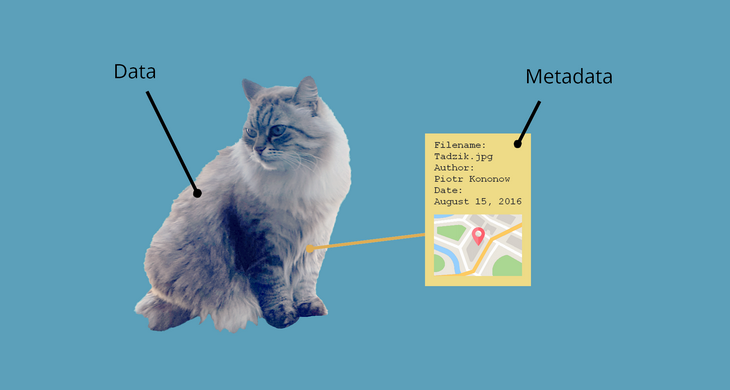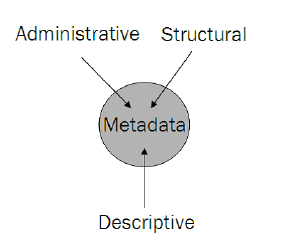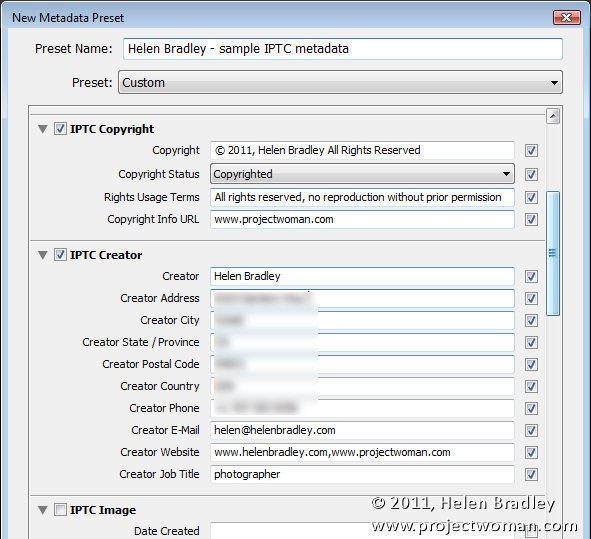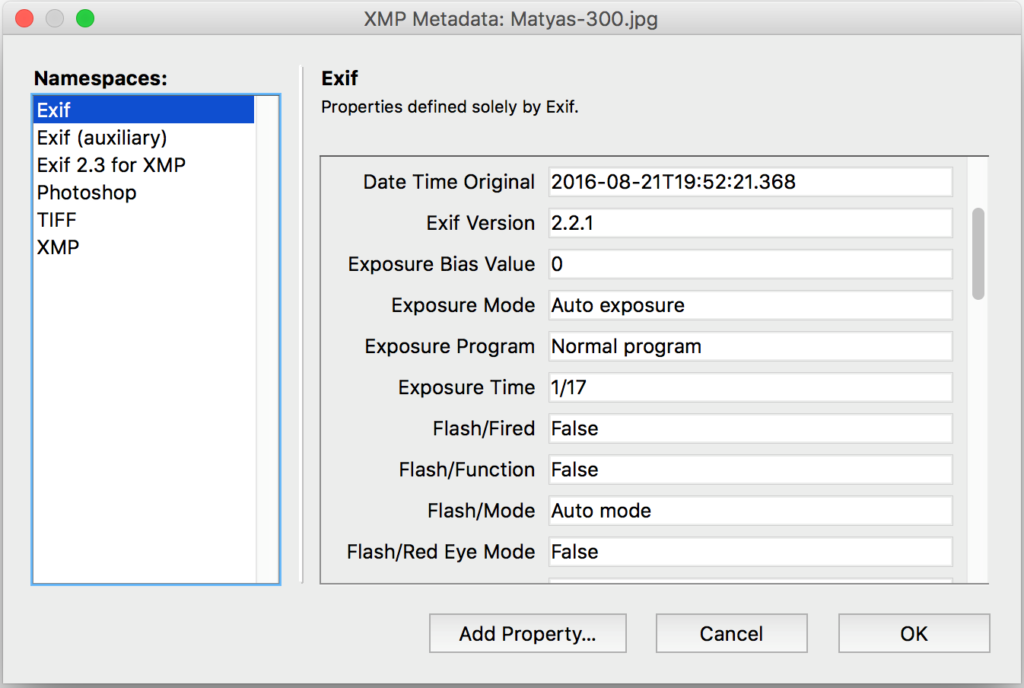How Picture Metadata Appeared And Why Is It Needed
Metadata is essentially data about other data. So image metadata or photo metadata is nothing more than data about that picture. It is info about that file in text format that may either be embedded into the same file or even exist as a separate file (e.g. EXIF data, XMP).
Image metadata appeared to help in the identification of the original data pertaining to a media file, meaning that it helps in the copyright protection as well as identification of the rights and administration of the picture. The information can then be sent with the file so it can be understood by software/AI or the humans using it.
It is stored internally as well as externally.
- When stored internally, it is embedded in the image file in digital setup that it is stored in, such as PNG, JPEG, TIFF, and DNG.
- When stored externally or outside the image, it is done so in a DAM system in the formats such as EXIF data, IPTC, and XMP.
As stated, image metadata or picture metadata contains information relevant to the picture and about its origin. Some of this data is even generated by the device capturing the snap. The additional data may be added either manually or via the tool/software metadata editor. It has multiple applications such as protecting the copyrights and intellectual property, for contextualizing and categorizing the media files.

Categories of Metadata
Metadata exists in three main categories that help in easy identification, protection, and categorizing of media files; this includes:
- Structural/Technical Metadata – This type is generated by the device capturing the snap so it contains the technical data or settings of the device like camera brand, date and time when it was captured, shutter speed, aperture, ISO number, DPI (Dots Per Inch), and focal depth.
- Descriptive Metadata – This information is manually added to an picture either by the photographer or via imaging software. It may contain data such as the name of the person who captured the snap, captions/titles/keywords related to it, and other information that can help in its easy accessibility.
- Administrative Metadata – This information is also added manually and contains administrative data like licensing information, contact information about the owner of the picture, and restriction on use among many others.
Keep in mind that these categories are not the same as formats but help in protecting the picture and its ownership along with making it easier to search the media file.

Digital Asset Management
With the implementation of a DAM (Digital Asset Management) system, organizations can easily:
- Search for the desired asset
- Save the time of filling in the adata
- Make sure the content is secured
- Monetize the content
- Share photo metadata efficiently and quickly
- Save cost and space on the storage of data
- Make interdepartmental communication easy
In short, it allows for the system to be effectively integrated into the environment of their corporation.
Standard Metadata Formats
There exist a number of formats to store the metadata for an image which includes:
- EXIF
- IPTC
- XMP
Let’s have a look at each of them in detail and see how they differ from one another.
Metadata EXIF

Exchangeable Image File Format or EXIF data is automatically produced by the picture capturing device whether that be a digital camera or a mobile phone and stored into the picture itself. For each image captured, it will have its own unique EXIF data.
EXIF data is a universally supported data form that was developed by JEIDA (Japanese Electronic Industry Development Association) in 1955 which is intended for graphical files such as RAW, JPEG, and TIFF and is globally accepted.
EXIF data contains a lot of information in its photo metadata which may even include the GPS coordinates of where the media was captured, date and time, as well as camera settings that were used. Additional metadata such as copyright information and keywords/tags can also be added to the picture. The image below is an example of what EXIF data looks like:

By recording the geological coordinates, an image can be tied to a specific location from where the picture was captured and can have multiple applications; that being said, at times, geolocation is sometimes unwanted and there are options to remove it as well.
EXIF data can help in the effective categorization or classification of images on the basis of data generated or manually added.
Metadata IPTC

IPTC or International Press Telecommunications Council is a standardized metadata form intended for use in media and press. As expected, the IPTC contains all the necessary information required by media or press agencies to publish images such as the picture title, its description, and location where the image or media was captured. It may also include copyright data as well as information about the photographer.
IPTC-IIM (Information Interchange Model) was developed in the early 1990s for storing and transporting data with images in a unified, organized, and systematic manner. It contains more information about the whereabouts and origins of a media file along with technical information.
IPTC may also include tags or keywords as part of IPTC data which is important for stock images. Since it is a globally accepted format, it is one of the most widely used standards for describing data pertaining to an picture to be used by news agencies, libraries, museums, photo agencies, and other professional industries.
Metadata XMP

XMP or Extensible Metadata Platform where the images store changes made to them post-processing. So whatever changes are made to a file post-processing are rewritten over the existing XMP data. Similar to the aforementioned formats, it helps in describing the contents of the media file with keywords/tags along with providing basic data on the file.
Each time an XMP file is edited, the new picture metadata is stored in the file that can be viewed to better understand the current situation of an asset. XMP is a powerful method for capturing and sharing valuable data that can be leveraged by the content creator or editors.
Artificial Intelligence To Enrich The Metadata

Whatever the data type picture is stored in, AI has made it feasible to create and enrich metadata with identification of elements present in an image; it is becoming a widespread trend for automatic generation of data and takes significantly less time in comparison to the manual process.
An AI can help in the identification of objects like faces, locations, numbers or alphabets, and even various objects which allows it to generate data pertaining to each picture which can allow for easy categorization, generation of tags or keywords, and even help translate the text data into other languages.
Ultimately, metadata is a vital aspect of any picture or media file that can help in its identification, categorization, and help in the protection of copyrights. It allows for easy search for a digital image and for tracking its use.






